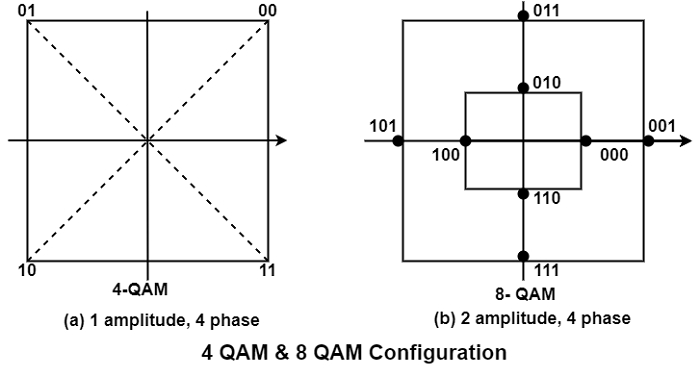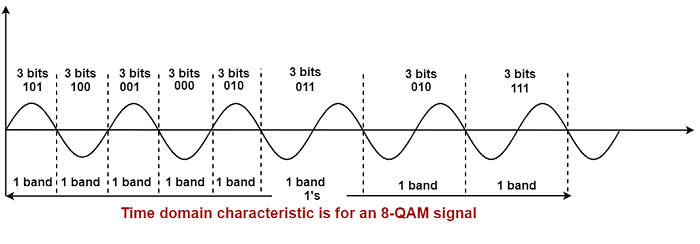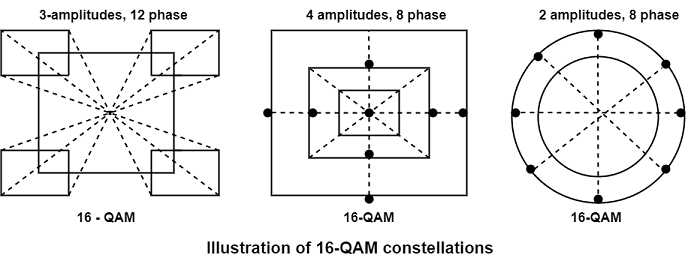
 Data Structure
Data Structure Networking
Networking RDBMS
RDBMS Operating System
Operating System Java
Java MS Excel
MS Excel iOS
iOS HTML
HTML CSS
CSS Android
Android Python
Python C Programming
C Programming C++
C++ C#
C# MongoDB
MongoDB MySQL
MySQL Javascript
Javascript PHP
PHP
- Selected Reading
- UPSC IAS Exams Notes
- Developer's Best Practices
- Questions and Answers
- Effective Resume Writing
- HR Interview Questions
- Computer Glossary
- Who is Who
What is Quadrature Amplitude Modulation (QAM)?
Phase Shift Keying (PSK) is limited by the equipment’s ability to distinguish the small phase difference. This factor is responsible for determining its potential bit rate. Quadrature amplitude modulation can be defined as a consolidation of ASK and PSK so that a maximum difference between each signal unit (bit, dibit, tribit, and so on) is accomplished.
IN QAM, there are several possible variations. Suppose any measurable number of amplitude changes can be mixed with any measurable number of phase modifies. The figure shows 2 possible configurations, 4-QAM and 8-QAM.
In both methods, the number of amplitude switch is less than the number of phase switch. Due to amplitude changes are affected by noise and require greater shift differences than phase changes, the number of phase shifts used by a QAM system is continually larger than amplitude shifts.
The diagram shows the time-domain plot equivalent to the 8-QAM signal of figure (b) −


The other geometric relationships are also applicable. The diagram shows three popular 16-QAM configurations.

In the first case, 3 amplitudes and 12 phases treat noise-free best because of a greater phase shift ratio to amplitude. The second case, with four amplitudes and eight phases, is the OSI recommendation. It can be observed that not every intersection of phase and amplitude is used. 4 times, 8 should enable 32 possible variations. Therefore, using only one-half of those possibilities, the measurable differences between shifts are raised, and higher signal readability is secured further.
Bandwidth for QAM
The minimum bandwidth requirement for QAM transmission is similar to that needed to ASK and PSK transmission.

